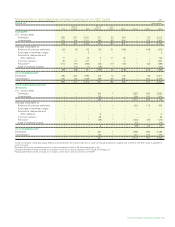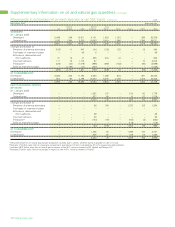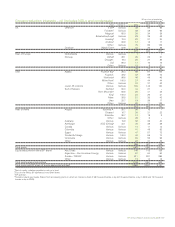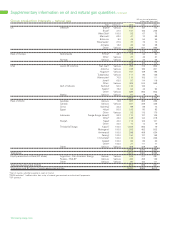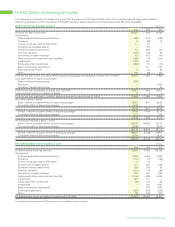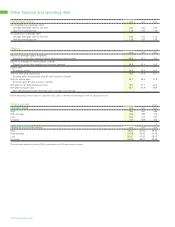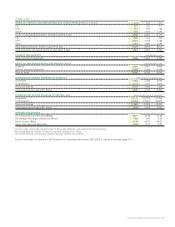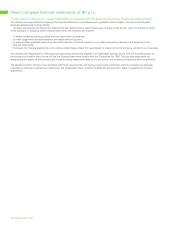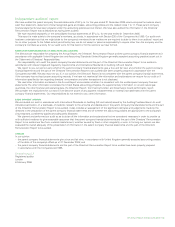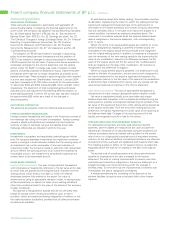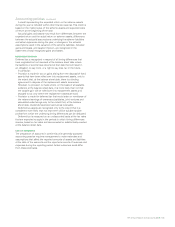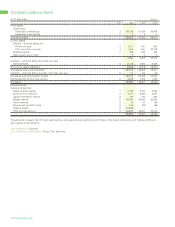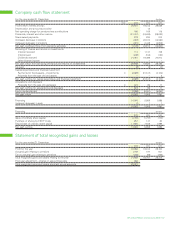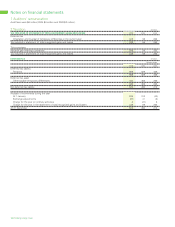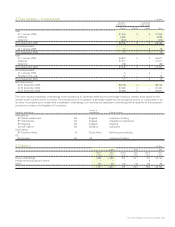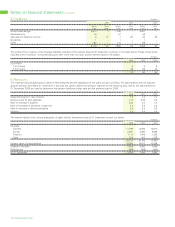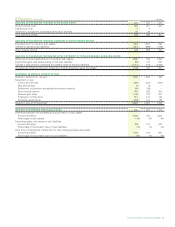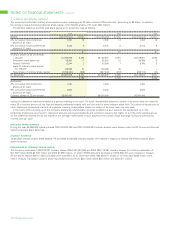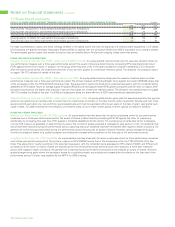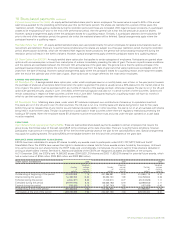BP 2005 Annual Report Download - page 147
Download and view the complete annual report
Please find page 147 of the 2005 BP annual report below. You can navigate through the pages in the report by either clicking on the pages listed below, or by using the keyword search tool below to find specific information within the annual report.BP Annual Report and Accounts 2005 145
Accounting policies continued
A credit representing the expected return on the scheme assets
during the year is included within other finance expense. This credit is
based on the market value of the scheme assets and expected rates
of return at the beginning of the year.
Actuarial gains and losses may result from differences between the
expected return and the actual return on scheme assets; differences
between the actuarial assumptions underlying the scheme liabilities
and actual experience during the year; or changes in the actuarial
assumptions used in the valuation of the scheme liabilities. Actuarial
gains and losses, and taxation thereon, are recognized in the
statement of total recognized gains and losses.
DEFERRED TAXATION
Deferred tax is recognized in respect of all timing differences that
have originated but not reversed at the balance sheet date where
transactions or events have occurred at that date that will result in
an obligation to pay more, or a right to pay less, tax in the future.
In particular:
••• Provision is made for tax on gains arising from the disposal of fixed
assets that have been rolled over into replacement assets, only to
the extent that, at the balance sheet date, there is a binding
agreement to dispose of the replacement assets concerned.
However, no provision is made where, on the basis of all available
evidence at the balance sheet date, it is more likely than not that
the taxable gain will be rolled over into replacement assets and
charged to tax only where the replacement assets are sold.
••• Provision is made for deferred tax that would arise on remittance of
the retained earnings of overseas subsidiaries, joint ventures and
associated undertakings only to the extent that, at the balance
sheet date, dividends have been accrued as receivable.
Deferred tax assets are recognized only to the extent that it is
considered more likely than not that there will be suitable taxable
profits from which the underlying timing differences can be deducted.
Deferred tax is measured on an undiscounted basis at the tax rates
that are expected to apply in the periods in which timing differences
reverse, based on tax rates and laws enacted or substantively enacted
at the balance sheet date.
USE OF ESTIMATES
The preparation of accounts in conformity with generally accepted
accounting practice requires management to make estimates and
assumptions that affect the reported amounts of assets and liabilities
at the date of the accounts and the reported amounts of revenues and
expenses during the reporting period. Actual outcomes could differ
from these estimates.


